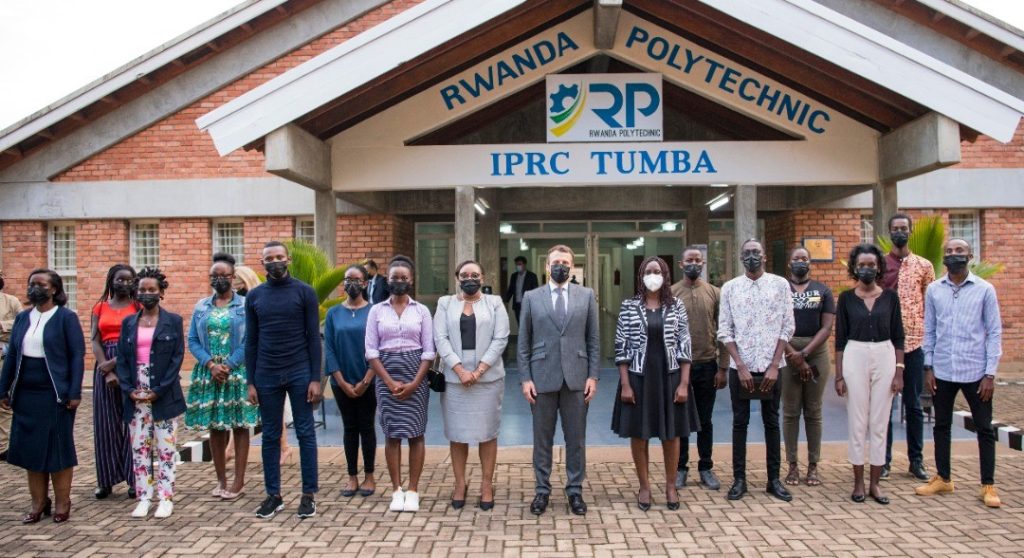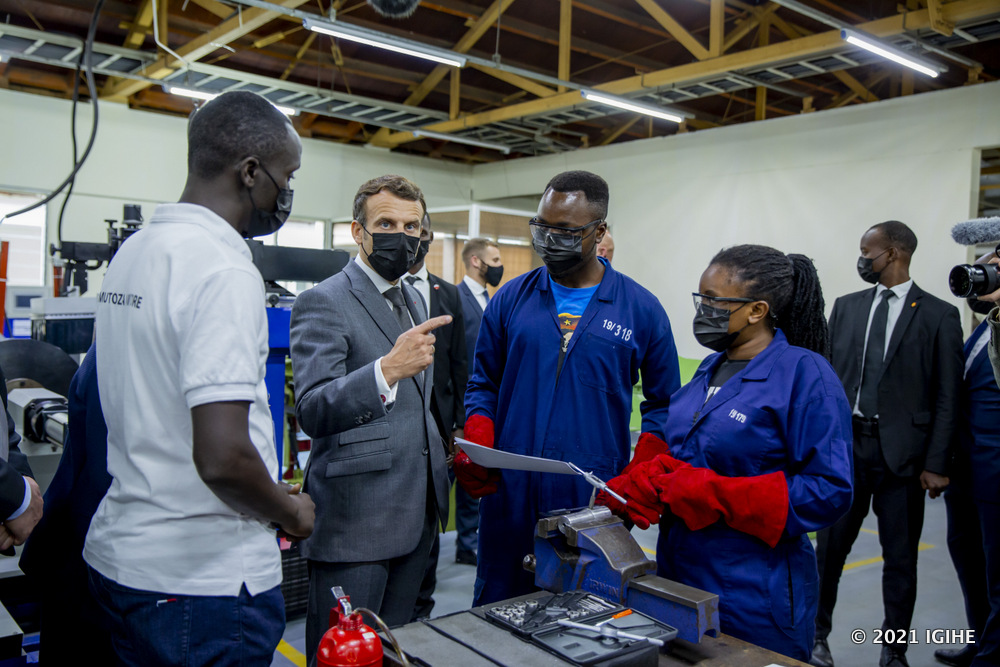Rwanda will soon begin producing highly skilled mechatronics technicians, thanks to a new Rwf6.3 billion investment made at IPRC Tumba, a technical college located in Northern Rwanda.
Part of the funding is provided by the French Development Agency (AFD) as a result of a cooperation agreement signed between Rwanda and France following President Emmanuel Macron’s visit to Rwanda in May 2021.
Then, Macron highlighted the commitment of France to support Rwandan youth through the modernization of the vocational training, and creating the skills needed for the economic future of the country.
Indeed, a cooperation agreement has been signed between Rwanda Polytechnic and the Université Paris-Saclay, and more specifically the “Institut Universitaire de Technologie Cachan” (IUT Cachan), specialised in Mechatronics, to build capacities of Mechatronics trainers; the first training trip in Paris took place in October 2021.
The Minister of State in charge of ICT and TVET, Claudette IRERE, the Ambassador of France in Rwanda, Antoine ANFRE, and the AFD Country Director Arthur GERMOND and other dignitaries will preside over the official opening of the program on Thursday May 11, 2023.
The Mechatronics Program at IPRC Tumba will increase the number of skilled Mechatronics technicians to the labour market, especially modern and automated industries that are rising in Rwanda.
Mechatronics is an interdisciplinary branch at the intersection of mechanics, electronics, and computing aiming at designing and maintaining automatic equipment such as robotics and control systems.
Mechatronics is an essential foundation in automation and manufacturing, and as such is highly demanded in modern industry in many sectors as food processing, manufacturing, mining, aviation, robotics, defence, transport, amusement parks, etc.
The Mechatronics Program is made of four workshops and six laboratories covering all aspects of the discipline: Manufacturing, Mechanical, Electrical Industrial, Electrical Domestic, Hydraulics and Pneumatic, Computer Modelling and Simulation, Automation, Electronics, and Telecommunications.
The building also entails 10 classrooms, one mini-auditorium, a new language laboratory to be equipped with specialized language learning application, and a library.
The building will be fully accessible for Person with disabilities and is environmentally friendly both in construction and exploitation phases.




















